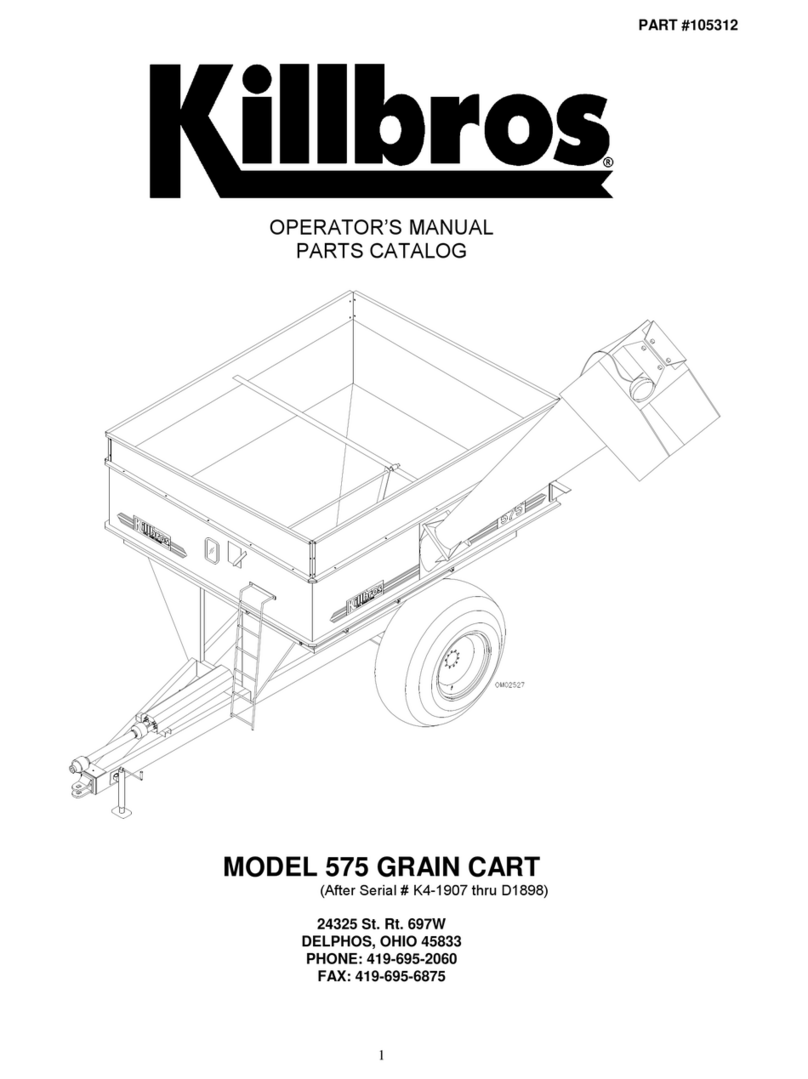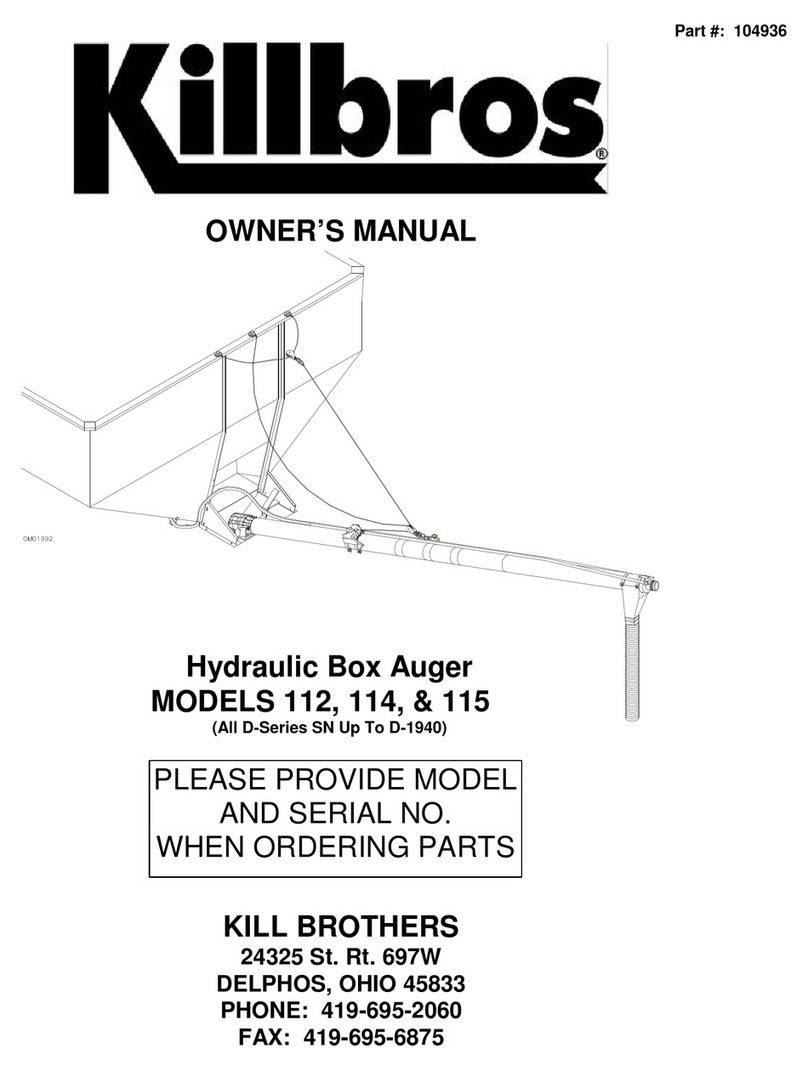
SAFETY
AVOID POSSIBLE INJURY
Always use safety precautions. Most acci-
dents are a result of failure to practice safety.
Accidents cause lost time and suffering. Do
not operate the Grain Cart without reading
this manual thoroughly.
Follow all safety precautions as outlined in
this manual.
All machinery should be operated only by
those who are experienced and responsible
and have been delegated to do so.
BEFORE OPERATING
Be sure that all hardware is in place and
properly secured.
Keep safety signs clean and legible at all
times.
Check tire pressure so that it is at the rec-
ommended rating during operation.
Check box for any debris or excess grain
before each use.
Keep children and all unauthorized personnel
clear of work area.
Do not allow anyone to ride on the equip-
ment. Make sure everyone is clear before
operating the machine or tractor.
Always shut tractor engine off when working
on the unit.
Be sure that the clean-out doors are closed
and securely latched.
Keep body, hair, and clothing away from
moving parts.
DURING OPERATION
Keep children and all unauthorized personnel
clear of work area.
Never enter or climb on Grain Cart while the
auger is running.
Do not operate with safety shields removed or
clean-out door open.
Ensure that all personnel are clear before
moving the Cart.
Do not attempt to move any objects away
from moving parts.
Keep hands, feet, clothing, and objects away
from moving parts.
Do not grease equipment when in operation.
DO NOT allow ANYONE to enter the box at
any time, if entry is necessary, be sure chute
door is closed, P.T.O. is disengaged, and
tractor brakes are locked before entry.
BEFORE TRANSPORT
Make sure that all safety decals and reflec-
tors are clean and in place on the machine.
While attaching cart to tractor be sure you
can see the driver and the driver can see you
at all times to avoid being struck by the
tractor.
Comply with all state and local laws governing
highway safety when moving machinery.
Use accessory lighting and warning lights when
transporting at night to adequately warn op-
erators of other vehicles.
When auger is not in use, be sure to fold to
rest position.
DURING TRANSPORT
Use good judgment when transporting imple-
ments on highways. Maintain complete control
at all times. Regulate speed to road condi-
tions.
Be careful when moving unit near electrical
lines with discharge auger up.
Drive at speeds slow enough to insure your
safety as well as others.
Regulate speed during off-road travel. Do not
travel faster than 8 M.P.H. loaded.
Due to the height and width of the implement,
use extra caution on highways, farm lanes,
and when approaching low and narrow clear-
ances.
Follow all regulations concerning weight limita-
tions on roadways, bridges, and overpasses.
Unit is to be towed at tractor speeds only. 20
M.P.H. maximum.
COMPLY WITH ALL SAFETY WARNINGS
AND CAUTIONS IN THIS MANUAL!





























